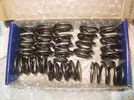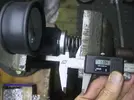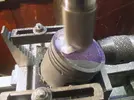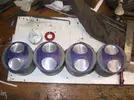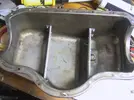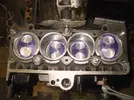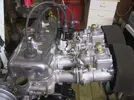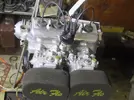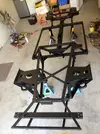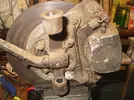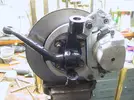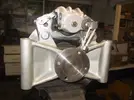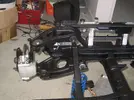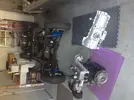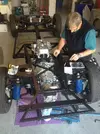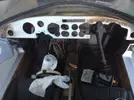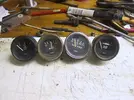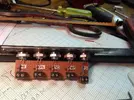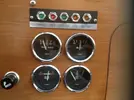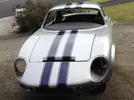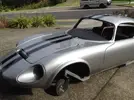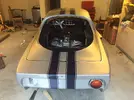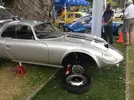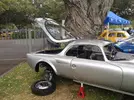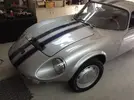Renoholic
Active Member
Me and my son came across a Matra Jet 6 for sale and he decided to buy this car and import it to NZ. The Matra history is quite a lengthy one and very interesting for me. What makes it outstanding is that with its design in 1962/63 Rene Bonnet built it as a true mid engined car. The very first, beating the likes of De Tomaso, Ferrari and Lamborghini. Being a good engineer and bad accountant he was soon in debt with MATRA from whom he rented workshop space and they did the body for him as MATRA had a lot to do with missiles and weaponry and aircraft. They decided to take him over instead of closing him down. From 1964 onwards the name changed from the RB to Matra. First ones were called Djet but the D was dropped in 1967 with the Jet 6.
The car my son bought is a Jet 6 and is no 139 of 222 built during 1967 and 68. At first it looked like you could almost start and drive it but that was only wishfull thinking. The engine, a Gordini, was newly rebuilt and not yet oil in it, new filter etc. Curiosity opened the rocker cover and found some homemade pushrods far to thick and heavy to my liking, that lead to the removal of the head. Holy sh!t what I found was scary. Dome pistons so high that I later calculated would have been 19:1 compression ratio. The bottom end revealed a knife edged crank that I later threw out when it showed a run out on the flywheel and after checking found that it was cracked, the thrust washers were one standard and the other home made from brass. The head had 3 of the 5 extractor mounting holes stripped and some body increased the exhaust ports only to almost in the water jackets. With the extractor bolted on there will be a huge blockage as the gases trying to get out with the step created by the smaller standard extractor base. I decided to scrap that and started the build of a new engine.
This is the huge outlet ports.
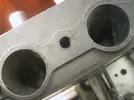
I then put it in my milling machine and made the ports parallel, or as close as possible to parallel.

Then I turned new inserts to resize the standard size
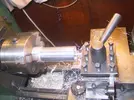
That are pressed into the new ports.
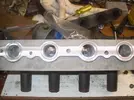
That was only one aspect of the head repair because that is one item that can't be replaced. They are made from unobtanium.
To be continued.
The car my son bought is a Jet 6 and is no 139 of 222 built during 1967 and 68. At first it looked like you could almost start and drive it but that was only wishfull thinking. The engine, a Gordini, was newly rebuilt and not yet oil in it, new filter etc. Curiosity opened the rocker cover and found some homemade pushrods far to thick and heavy to my liking, that lead to the removal of the head. Holy sh!t what I found was scary. Dome pistons so high that I later calculated would have been 19:1 compression ratio. The bottom end revealed a knife edged crank that I later threw out when it showed a run out on the flywheel and after checking found that it was cracked, the thrust washers were one standard and the other home made from brass. The head had 3 of the 5 extractor mounting holes stripped and some body increased the exhaust ports only to almost in the water jackets. With the extractor bolted on there will be a huge blockage as the gases trying to get out with the step created by the smaller standard extractor base. I decided to scrap that and started the build of a new engine.
This is the huge outlet ports.

I then put it in my milling machine and made the ports parallel, or as close as possible to parallel.

Then I turned new inserts to resize the standard size

That are pressed into the new ports.

That was only one aspect of the head repair because that is one item that can't be replaced. They are made from unobtanium.
To be continued.

